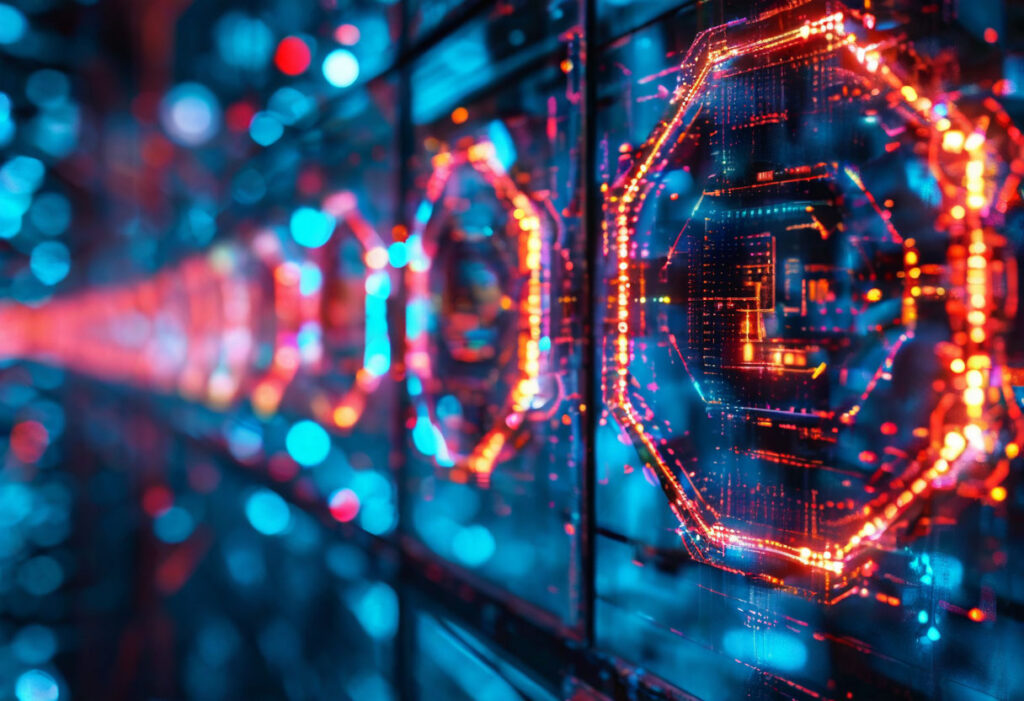The Evolution of AI and Blockchain Integration in Modern Hiring
Artificial intelligence and blockchain technology are coming together to change how companies hire, especially in fast-moving fields like cryptocurrency. Anyway, as AI tools help job seekers create lots of polished applications, many of which lack substance, it’s becoming crucial to have ways to verify skills. Blockchain-based decentralized identity systems step in here, offering proof of what people can do, moving past old-school resumes that can be easily faked.
You know, evidence shows that generative AI lets candidates tailor applications quickly, but this leads to a trust problem. Hiring managers often can’t tell real talent from AI-generated smooth talk. This is worse in remote work areas like crypto, where checking backgrounds is harder. On that note, blockchain records make professional history clear and portable, helping solve authenticity issues in today’s hiring scene.
Compared to traditional methods that depend on self-reports, blockchain adds transparency and security. For example, zero-knowledge proofs allow verification without oversharing, balancing privacy with trust. It’s arguably true that this shift isn’t just tech—it’s cultural, fitting with Web3 ideas where actions matter more than titles.
Synthesizing this, the push for verifiable reputations reflects a bigger trend toward data-driven hiring. By using blockchain, industries can reduce risks from AI content, creating a more reliable process that supports market stability and innovation.
Security Challenges and AI’s Role in Crypto Operations
Security is a huge worry in crypto, with AI acting as both a helper and a threat. The rise of AI cybercrime, like the ‘CopyPasta License Attack’, shows how coding tool weaknesses can be exploited to spread malware, affecting platforms such as Coinbase that use AI for efficiency.
Supporting data points to over $3.1 billion in crypto losses in 2025, mostly from access exploits and smart-contract flaws. DeFi platforms are especially at risk, with hacks like Cetus revealing advanced methods. In response, firms are tightening security with training and access rules to fight threats from groups like North Korean hackers.
Unlike old security that’s often slow and manual, AI provides real-time threat spotting through automation. But this brings new dangers, with AI exploits skyrocketing by 1,025% since 2023, so careful use and human oversight are key to strong defenses.
In terms of impact, better AI security can boost trust and draw more users to crypto, though it’s more about steady improvement than big changes. Integrating AI into security helps build a safer space for growth and meets regulatory needs.
Regulatory Frameworks Shaping AI and Crypto Convergence
Regulations for crypto and AI are changing fast, with new laws like the GENIUS and CLARITY Acts in the U.S. offering clearer rules to cut risks and improve security, backed by companies such as Coinbase for a stabler innovation environment.
Additional context shows global complexities, like the pause in Coinbase’s biometric lawsuit under Illinois’ privacy law, highlighting how crypto intersects with privacy rules. Similarly, Hong Kong’s Stablecoin Ordinance has strict penalties, stressing compliance in data handling. AI can automate things like KYC checks, but it needs transparency to avoid ethics issues and follow varied laws.
On that note, some regulators are easing up based on good compliance, as with the OCC ending its order against Anchorage Digital. This variation across regions challenges global crypto firms, requiring adaptive strategies and AI tools for real-time compliance updates.
Synthesizing this, regulatory progress is vital for blending AI and crypto sustainably, building trust and accountability for user adoption. The neutral market effect means these are corrective steps, making things more secure without major disruptions. Aligning AI with regulations drives innovation while protecting users.
Industry Trends in AI Acquisitions and Strategic Integrations
The crypto industry is buying up AI startups more often to boost trading, security, and compliance. For instance, Kraken acquired Capitalise.ai for language-based trading, and Chainalysis bought Alterya for fraud detection, showing a strategic move to integrate AI for an edge.
Evidence indicates acquisitions allow better control and customization than partnerships, leading to benefits. JPMorgan’s $500 million pledge to Numerai, an AI hedge fund, pushed its Numeraire crypto up 38%, showing big interest and high returns from AI quant strategies with digital assets.
Compared to smaller efforts, acquisitions enable smoother integration and long-term value but need lots of money and face regulatory checks. The mix of buys and collaborations highlights crypto’s competitiveness, where innovation is key. AI use spreads to mining too, with firms shifting to AI and high-performance computing for new opportunities and efficiency.
Linking to trends, these buys signal crypto’s maturity, with AI becoming central. The neutral impact suggests evolutionary gains in efficiency, security, and access, not sudden shifts. Embracing AI through acquisitions helps crypto firms grow in the digital economy.
Future Outlook and Challenges in Crypto-AI Integration
The future of AI in crypto promises big innovations but also tough challenges. Predictions say AI agents will rule ecosystems like Ethereum, enabling self-running transactions and better efficiency, as in Swarm Network’s decentralized AI protocol that checks off-chain data on-chain for transparency.
Supporting forecasts from UNCTAD suggest AI will be the top tech sector in a decade, its share of the ‘frontier tech’ market quadrupling in eight years. This means faster integration with crypto, advancing automated trading, fraud detection, and interfaces. However, issues like regulatory uncertainty, privacy worries, and the 1,025% jump in AI exploits since 2023 demand ethical AI and strong security for growth.
Unlike centralized AI, decentralized models offer more accountability and fewer single points of failure but need careful handling to avoid risks. The industry must create clear frameworks and global cooperation, through education and law enforcement, to manage these and build user trust.
In synthesis, the outlook is cautiously positive, with gradual advancements supporting the market. By focusing on innovation, compliance, and user needs, crypto can use AI for a safer, efficient, and inclusive asset landscape, encouraging adoption and resilience amid changes.

